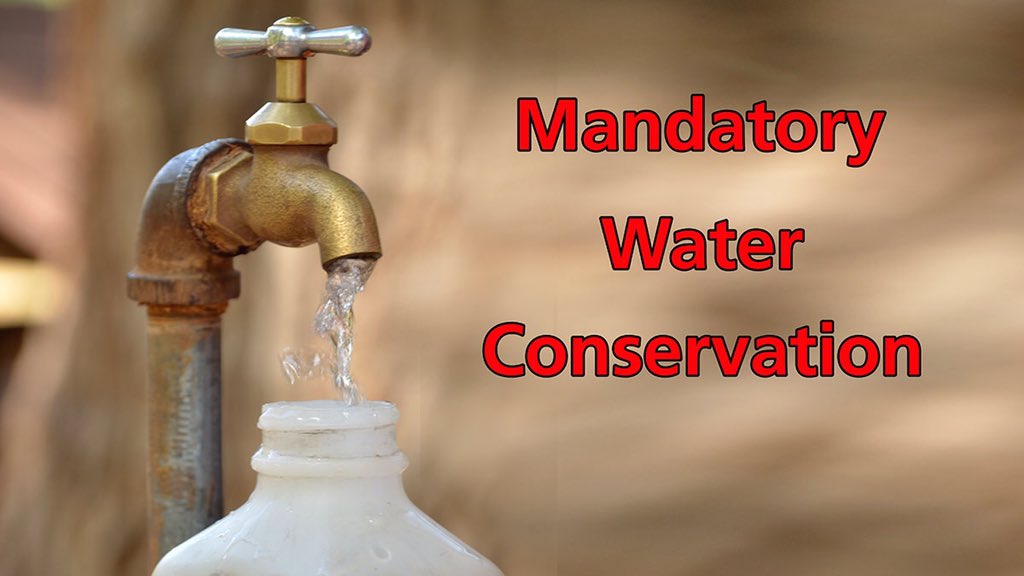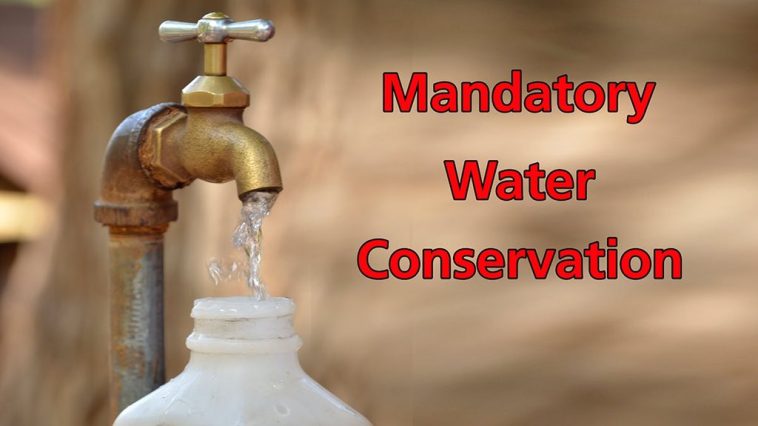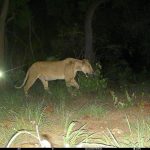
Reexamining Our Connection to Official Government Travel Resources
In today’s digital era, where information is only a click away, it’s more important than ever to know which sources to trust. As we plan our adventures and explore our nation’s most treasured sites, making sure we rely on official government websites has never been more essential. This opinion piece takes a closer look at what these official sources offer to us travelers, the secure protocols in place, and how recent alerts remind us of the ongoing challenges and triumphs in national park management.
The growing demand for clear, authentic information on outdoor recreation and travel destinations has led many to question, “How can I be sure that I’m using a genuine .gov website?” In this editorial, we’ll dig into the little details that distinguish official government websites from other online resources, and why the secure protocols they employ are critical for safe travel planning and information dissemination.
A Closer Look at Official Government Websites
When you come across a website ending in “.gov,” you’re looking at an online portal that belongs to an official government organization in the United States. This designation is more than just a domain ending – it’s a marker of trust, reliability, and a commitment to serving the public interest. But how does this officially translate into better service for travelers, and what are the tricky parts in ensuring that only secured websites are used?
Understanding the .gov Advantage
Official government websites are maintained by agencies committed to delivering accurate, timely, and secure information. Unlike many commercial ventures that can sometimes be riddled with ambiguous data or sensationalized claims, .gov sites are structured to offer clear, factual insights. These sources are a mainstay for anyone curious about national parks, travel alerts, and resource management initiatives. In this way, the government not only tells but shows its commitment through transparency and accountability.
Here are a couple of reasons why relying on a .gov website is super important for planners and travelers:
- Authenticity: Only official organizations are given the authority to use a .gov domain.
- Up-to-Date Information: Travel advisories, weather alerts, and current conditions are frequently posted to ensure timely updates.
- Reliability: These sites are backed by government resources funded to prioritize accuracy and public service.
- Security: They employ robust security measures that protect users from data breaches and misinformation.
It is clear that when we reserve a moment to verify a website’s authenticity, we not only protect ourselves but also streamline our planning process by accessing the best available data.
The Role of HTTPS and Secure Connections
Any discerning traveler will notice the padlock icon or the “https://” prefix in the web address when visiting a trusted site. This simple symbol is more than decorative—it signals a secure connection. With increasing cyber threats, ensuring that sensitive information is shared only over secure channels is a must-have step in today’s interconnected world.
Using HTTPS is a key factor in safeguarding details like booking information or personal data. It means that your journey through the site is encrypted, reducing the risk of unwanted interceptions. In practical terms, this means that whether you are booking tickets to a national park event or checking for the latest travel alert, you are doing so in a manner that protects both your privacy and your travel plans.
Decoding the Alerts and Advisories: A Glimpse into National Park Management
Recently, travel alerts issued for sites like the Grand Canyon have underscored how dynamic and, at times, nerve-racking travel planning can be. These alerts not only update us on changes, like trail closures or water conservation measures, but also help us set our expectations when visiting mesmerizing natural sites.
Current Travel Alerts: What They Mean for Your Adventure
Imagine planning a hiking trip at one of the nation’s most iconic landscapes only to find that critical trail segments are temporarily closed due to fires or extreme weather. Although these announcements may initially seem overwhelming, they remind us of the ongoing efforts to preserve and protect our natural treasures.
For example, recent notifications from the Grand Canyon National Park indicated closures caused by a wildfire and accompanying smoke. The alerts provided detailed information including:
- Closure of North Rim areas for the remainder of the season
- Temporary suspension of popular trails due to smoke in the canyon
- Critical updates on weather conditions, such as extreme heat warnings
- Instructions on alternative routes like using the Bright Angel Trail when near Havasupai Gardens
Alerts like these provide us with small but essential details that help manage expectations. They also serve as a reminder that nature is unpredictable, and our plans must always remain flexible. Rather than getting overwhelmed by such updates, it is better to see them as part of the natural rhythm of park management and environmental challenges.
Behind the Scenes: Managing Your Way Through Park Alerts
For many travelers, these frequent updates may appear like tangled issues that dampen the excitement of a planned trip. However, if we dig into the little details, it becomes apparent that these measures are designed to ensure both public safety and the long-term preservation of the environment.
National park authorities face a nerve-racking, yet essential, mission every day—balancing visitor needs with conservation efforts. They must manage everything from wildfires to water loss, ensuring that infrastructure is maintained even in difficult conditions. Consider the current water conservation measures implemented at the Grand Canyon’s South Rim following a broken pipeline issue. This incident illustrates how immediate and responsive management can be when faced with pressing situations.
The process includes several actionable steps like:
- Reporting and repairing drips, leaks, and other sources of water waste
- Utilizing reclaimed water for vehicle washing and landscape irrigation
- Adjusting everyday activities, such as reducing toilet flushes and monitoring dishwasher loads
- Encouraging shorter showers and turning off water while brushing teeth
These measures might seem like small pieces when taken individually, but collectively they illustrate a broader commitment to resource preservation and sustainable park management. They indicate that even in times of unexpected crisis, proactive steps are taken to mitigate damage, benefiting everyone in the long run.
The Value of Reliable, Up-to-Date Travel Information
Travelers depend on the reliability of official sources not only to plan their logistical routes but also to understand the broader context of the parks they visit. The detailed layout of official sites—featuring everything from emergency contact information to maps and modes of transportation—represents a full spectrum of support that visitors truly appreciate.
The true importance lies in having one trusted place for all travel and outdoor activity inquiries. Whether you’re looking for an update on seasonal road closures or the current temperature at key locations, the national park’s online portal organizes this data in ways that are easy to navigate. This fosters not only a sense of security but also an appreciation for the behind-the-scenes hard work that goes into managing these natural resources.
It is not difficult to understand why the travel community places such high value on this form of clarity. For instance, official websites make it easy to:
- Access the latest weather forecasts and safety advisories
- Find directions and transportation tips, whether you’re traveling by train, bus, or cushion in your own car
- Connect with ranger programs and cultural demonstrations that deepen your understanding of the park’s history
- Locate medical services, lost and found offices, or book specific educational activities, right from your smartphone
Each of these elements is vital in creating an overall positive travel experience, ensuring that visitors are well-catered for and informed at every step of their journey.
Exploring the Grand Canyon: On the Road to Sustainable Travel
No discussion of official government travel resources is complete without a nod to the longevity and preservation of our cherished natural wonders. The Grand Canyon, with its sprawling vistas and rich history, remains a cornerstone of American travel and outdoor engagement. However, visits to this majestic site are not without challenges, as recent alerts and updates clearly illustrate.
The Impact of Natural Events on Park Operations
From wildfires to extreme heat, the natural environment of the Grand Canyon is constantly shifting and evolving. It’s a testament to the resilience of nature as well as the dedicated work of park authorities who must make quick decisions in response to these changes. When alerts indicate that key trails and areas are off-limits—such as the closure of the South Kaibab Trail or restrictions around Phantom Ranch—visitors are urged to adjust their plans accordingly.
While these adjustments may seem intimidating or off-putting, they underscore the importance of widespread natural awareness. Instead of viewing these temporary setbacks as roadblocks, many see them as opportunities to explore alternative routes, enjoy new attractions, or even learn about the conservation efforts that keep these areas safe. In some ways, these moments reflect a microcosm of the broader challenge of balancing human activity and natural preservation.
Water Conservation: A Testimony to Sustainable Practices
One of the noteworthy changes at the Grand Canyon has been the implementation of water conservation measures, particularly on the South Rim. The proactive steps taken in response to a broken pipeline illustrate the park’s commitment to sustainable resource management. By emphasizing measures such as repairing leaks, using reclaimed water, and promoting efficient household practices, the park sets a shining example of what responsible travel looks like.
A closer look at these measures shows that while the process may involve navigating some confusing bits and trying to figure out a path through a series of adjustments, the underlying goals are both critical and must-have for today’s environmentally conscious traveler. Here’s a quick table summarizing some of the key water conservation actions currently in place:
| Action | Description |
|---|---|
| Leak Reporting | Encouraging visitors and staff to report any drips or leaks to ensure quick repairs. |
| Reclaimed Water Use | Utilizing recycled water for non-potable uses such as vehicle washing and irrigation. |
| Water Usage Guidelines | Recommendations to reduce water consumption in daily activities like showering and dishwashing. |
| Infrastructure Repairs | Priority repairs to damaged pipelines to restore efficient water delivery. |
These efforts may seem like small adjustments in the grand scheme of matters, but they play a key role in ensuring that the park continues to be a welcoming space for generations to come. By proactively addressing these tangible issues, the park is not only working through immediate challenges but also paving the way for a future where environmental sustainability is at the forefront of travel planning.
Trust, Transparency, and the Traveler’s Experience
At the heart of every official government website lies a commitment to trust and transparency. This dedication is what makes these sites indispensable tools for the modern traveler. Whether you’re planning a weekend escape or a month-long expedition, knowing that the information you base your decisions on is carefully curated and accurate can transform your entire experience from nerve-racking to reassuring.
One major advantage is the availability of detailed guides covering everything from operating hours and season-specific advisories to mapping out the best routes and understanding the safety protocols in place. Below is a bulleted list and table summarizing key aspects that enhance the traveler’s experience:
- Comprehensive Navigation Tips: From detailed maps to directional guidelines, official sites help you figure a path, whether you’re driving, hiking, or using public transportation.
- Safety Information: Up-to-date alerts on weather conditions, fire restrictions, and emergency contact details ensure that you can plan your journey with confidence.
- Visitor Programs and Cultural Events: Listings of ranger programs, educational tours, and cultural demonstrations enrich your travel experience.
- Accessibility Features: Tailored information to help all visitors, including those with special needs, understand available services and facilities.
| Feature | Benefit to Travelers |
|---|---|
| Real-Time Weather Alerts | Helps visitors prepare for sudden weather changes or severe conditions. |
| Trail and Route Updates | Ensures that hikers and explorers avoid dangerous or closed areas. |
| Emergency Contacts | Provides immediate support in case of accidents or sudden health issues. |
| Cultural and Ranger Programs | Offers a deeper understanding of the park’s history and natural environment. |
Being armed with such fine details empowers travelers. It means that you don’t just show up at a national park expecting a straightforward journey—you’re prepared for the twists and turns that natural environments invariably bring, turning potentially nerve-racking experiences into opportunities for exploration and learning.
Bridging the Gap Between Technology and Nature
There is a fascinating intersection where modern technology meets the timeless wonder of nature. Official government websites exemplify this blend by taking advantage of secure, well-designed digital platforms to bring the outdoors closer to us. Whether you’re checking the latest updates about trail conditions or accessing immersive multimedia guides that allow you to virtually tour a national park, these online resources make it possible to connect with nature even before your boots hit the ground.
For those who may feel a bit wary of digital complexities, it helps to know that the government’s digital portals are continuously evolving. They integrate user-friendly interfaces and intuitive layouts to help you steer through the site with ease. Here are some of the ways technology is enhancing the connection between you and nature:
- Mobile Apps: Many parks have dedicated apps offering detailed maps, alerts, and even virtual tours to help you plan your visit.
- Interactive Maps: These allow you to find your way around vast park areas, highlighting points of interest such as visitor centers, scenic overlooks, and historical sites.
- Multimedia Galleries: From video walkthroughs to photo galleries, these features help you get a sense of the park’s beauty before arriving.
- Social Media Integration: By following official accounts on platforms like Twitter and Facebook, you can receive real-time updates and community insights.
It’s an exciting time where technology not only enhances safety but also deepens our personal connection with the natural world. The integration of modern tools with longstanding governmental traditions of careful planning and maintenance offers travelers the best of both worlds—accessibility and reliability in a single interface.
Adapting to Challenges: A Traveler’s Ongoing Journey
Looking deeper into the current landscape of national park travel, a consistent theme emerges: the constant need to adapt. Whether it’s a sudden change in weather, unexpected closures due to wildfires, or the practical challenges of water conservation, today’s traveler is often called upon to make quick adjustments on the fly.
This type of dynamic situation can feel overwhelming. However, if you break it down, the task of adjusting is made up of manageable, small twists—each an opportunity to appreciate the dedication of the park systems. Instead of letting these situations deter you, consider them as moments that enrich the journey, offering a glimpse into the persistent effort to care for our natural heritage.
Many visitors also find that these experiences transform the way they approach travel. Rather than seeing updates as a hindrance, they become part of the adventure—a true demonstration of making your way through a challenging environment. For instance, when faced with alerts about extreme heat, a savvy traveler may choose to explore alternative trails that are shaded or plan their hikes during cooler hours of the day, thereby ensuring both safety and enjoyment.
Planning for the Unpredictable: Strategies for Resilient Travel
Preparing for the unexpected is not just about having the right gear; it’s about cultivating a mindset that embraces flexibility. Here are a few strategies that can help you manage your way through unpredictable moments on your travels:
- Stay Informed: Regularly check official sources for the latest updates on weather, trail conditions, and any emergency alerts. Knowledge is the first step in ensuring safety.
- Have a Backup Plan: Always identify alternative travel routes or attractions in case your first-choice destination becomes inaccessible.
- Pack Wisely: Include extra water, a charged phone, and basic first-aid supplies so you’re prepared for sudden changes.
- Engage with Local Communities: Often, park rangers and local guides can provide small distinctions about environmental conditions that you might not find online.
Even when faced with off-putting challenges, each step of the way can be seen as a small piece in the larger puzzle of sustainable travel. By adapting your plans to fit the current situation, you contribute to a cycle of responsible tourism that benefits everyone—from the local communities to the ecosystem at large.
Embracing the Evolution of Outdoor Experience
The realm of outdoor recreation is constantly evolving, and the digital tools we now have in our hands are a testament to that change. In the past, planning a visit to a national park might have involved poring over printed maps and waiting for seasonal brochures. Today, advanced websites and mobile applications provide real-time data that can help you figure a path through even the most complicated pieces of your itinerary.
This evolution not only facilitates planning but also deepens our understanding of the parks we cherish. Detailed historical accounts, cultural narratives, and environmental insights are woven into the digital fabric of official sites, creating a rich tapestry of knowledge. By taking a closer look at these resources, we gain a deeper appreciation for the management dynamics at play—balancing public access with conservation needs, and addressing both the subtle details of daily maintenance and the broader initiatives aimed at environmental sustainability.
Interactive Resources That Enhance Your Visit
The benefits of engaging with official online travel resources extend far beyond simple updates. Many websites now feature interactive components designed to immerse visitors in the park experience. These resources include:
- Virtual Tours: Experience an interactive, panoramic view of key sites and trails before you even step foot outside your door.
- Multimedia Exhibits: In-depth photo galleries and videos that capture the spirit and history of the park.
- Educational Programs: Online segments and distance learning sessions that allow families, students, and enthusiasts to understand the environmental factors influencing park management.
- Community Forums: Digital spaces where fellow travelers can share their experiences, tips, and encouragement in real time.
Each of these features is designed to not only inform but also inspire. When you see the passion with which these resources are developed, it becomes clear that the spirit of the outdoors is very much alive in the digital realm. By embracing these tools, travelers can feel more confident and engaged in every step of their journey.
The Road Ahead: Preserving Heritage and Promoting Sustainable Travel
As we reflect on the blend of digital information and natural exploration, a recurring theme emerges: the importance of sustainability. National parks, historical sites, and public landmarks require ongoing care and attention, and this responsibility is shared by both the governmental bodies and each one of us who plans a visit.
The current landscape of online portals, travel advisories, and resource management measures underscores a critical truth: preserving our heritage is not a passive activity. It involves meticulous planning, the courage to make adjustments when necessary, and a collective commitment to ensure that future generations can also enjoy these wonders. The measures implemented at places like the Grand Canyon—whether it’s a response to environmental challenges such as water shortages or trail closures due to weather conditions—are testaments to that commitment.
Looking forward, it is clear that the collaboration between technology and environmental stewardship will continue to strengthen. For travelers, this means that the journey through life’s scenic routes will be supported by robust, transparent, and secure information systems. For park management professionals, it represents an ongoing challenge to refine systems, update interventions, and ultimately keep our public spaces open and enjoyable for all.
The Benefits of Sustainable Management Practices
The adoption of sustainable travel and conservation practices yields benefits that ripple far beyond the immediate scope of a single park or destination. Some of the positive outcomes include:
- Enhanced Visitor Experience: When visitors are well-informed through real-time data and secure websites, their experience is smoother and more fulfilling.
- Environmental Preservation: Proactive water conservation measures and careful trail management help protect fragile ecosystems.
- Economic Savings: Efficient management of resources reduces maintenance costs, ultimately benefiting all users of the park.
- Community Engagement: Transparency and open communication foster a sense of partnership between the authorities and the visitors, ensuring that local and historical narratives are preserved.
These benefits demonstrate that sustainable practices are not just a regulatory burden—they are essential ingredients for creating a robust, future-proof system that supports both nature and human endeavors.
Conclusion: A Call for Continued Engagement and Trust
In our time of ever-changing travel landscapes, where nature’s unpredictable mood can alter our finely tuned plans, official government websites remain a beacon of consistency and trust. Their role in disseminating accurate and secure information, especially in times of crisis, cannot be overstated. From the unmistakable .gov domain to the secure HTTPS protocols in place, these platforms empower us as travelers to make informed, confident decisions.
As we continue to explore and appreciate our natural and cultural heritage, let us remember that every update, every alert, and every conservation measure is part of a larger effort to safeguard our public treasures. The dynamic alerts about the Grand Canyon, the targeted water conservation measures, and the wide array of digital resources available are all small but key indicators of a system that cares and responds. They remind us that while the twists and turns of planning a recreation trip can sometimes seem intimidating, they also carry the promise of a safer, more sustainable future.
This is an invitation to all travelers: take the time to dig into the details, appreciate the secure channels available for planning, and trust the official sources that have proven their worth over time. Whether you’re venturing into the wild terrains of a national park or simply looking to understand the fine points of modern park management, consider the guidance of these trusted platforms as essential tools for your journey.
Let us embrace the collaboration between modern technology and environmental stewardship. In doing so, we not only safeguard our trips and enhance the outdoor experience but also contribute to the ongoing preservation of our natural heritage. By leveraging secure, official websites, and by staying informed through timely updates, every one of us becomes part of a larger movement—a movement dedicated to sustainable travel, open access to accurate information, and a future where the wonders of our land can be enjoyed by all without compromise.
In conclusion, as you plan your next trip, remember to confirm that your digital destination is backed by the authenticity of a .gov website. Appreciate the secure connections that allow you to plan safely, and be flexible when nature calls for adjustments. In these moments, our collective trust in reliable sources not only enhances our travel experiences but also contributes to the preservation of the scenic landscapes we hold dear.
This journey is one of both discovery and responsibility—of recognizing that every update and every bit of information is a testament to a larger system working to maintain the delicate balance between public access and conservation. So, as you step out onto the trails or sit by a digital map planning your route, know that your awareness and engagement help build a legacy of transparency, trust, and mutual respect between travelers and the guardians of our natural world.
Here’s to smart, secure travel and the enduring beauty of our national treasures—a true celebration of what it means to explore with confidence and care.
Originally Post From https://www.nps.gov/grca/learn/news/water-restrictions-south-rim-august-2025.htm
Read more about this topic at
NPS.gov Homepage (U.S. National Park Service)
Oak Mountain State Park | Alapark


